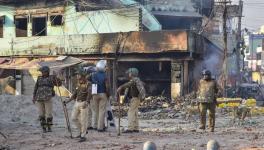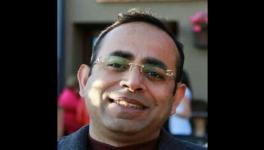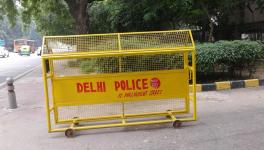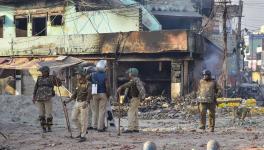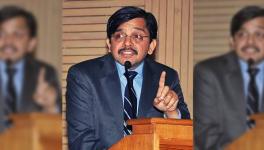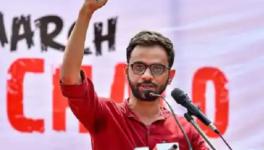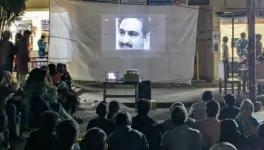Barbarity in the Name of Religion: Delhi Violence and a Pedagogy of Hate
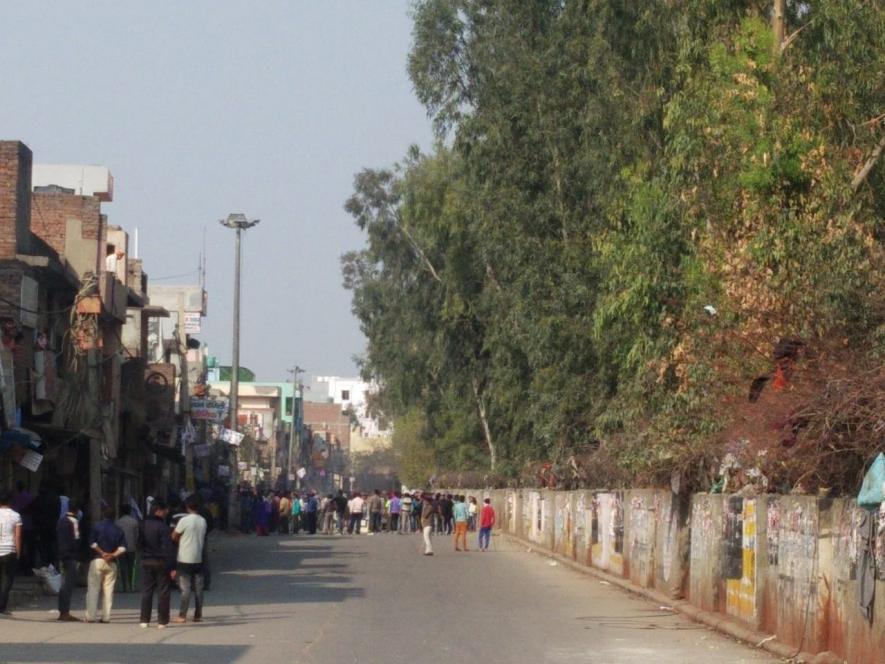
An atmosphere was being fostered; the February air in Delhi carried with it the stench of threats, hatred and possible violence. By month-end, the stench acquired a concreteness that was tangible. Its impact would reverberate through time and space as was the purpose. The violence not only appears to be a planned act aimed at generating a sense of fear among minorities, but also aimed at diverting attention from the economic crisis that India is faced with today. In the process of achieving these two aims, what the perpetrators have done is that they’ve created a well thought out pedagogy of hate, con-sensualising the masses into their project. By using the unemployed as rioters, those in power established that what is important for the masses today is to get rid of or suppress the ‘other’, rather than thinking about why people are losing jobs and becoming a precariat due to the policies and politics of the ruling elite.
The state is violent by nature and has always worked through mechanisms of consensus and coercion. The con-sensualisation is achieved through the political formation that dominates it – the ruling class that devises interesting and innovative methods during these times of digital revolution and WhatsApp universities, as well as through the large bureaucracy that is put to task to ensure that the state’s ideas reach the people. It is a grand exercise in pedagogy.
Along with mechanisms to create a consensus at the level of ideas, militarisation has been part of right-wing training for ages. In this sense, consensus and coercion has been embodied into right-wing politics even when it was out of state. However, for India, the recent developments in which the consensus-coercion paradigm has taken a mass form is something new. A ‘massification’ of hatred is being encouraged through consensual means and occasional violence through state and non-state actors geared towards a similar end further consolidates it. This is a well-planned (with use of social media etc.,) and orchestrated violence, which relies on mobilisation of killers and arsonists from outside the locale where violence is perpetrated. The instruments of state are also inducted in this entire process. The police is supposed to have had a response ranging from delayed, to none, sometimes even working hand-in-hand (depending on how one interprets it). The state remains without blemish – is not the murderer – non-state actors commit the crime while the powers that be are also not even able to identify the criminals, as shown by FIRs filed against unknown persons. Even the highest court appears helpless in this matter and there is virtual exoneration of rioters.
The violence happened in the culmination of a long, drawn out process which Indian history has witnessed courtesy right-wing politics. It reached its new heights when Ministers, Members of Parliament and Chief Ministers began openly advocating animosity towards minorities. What transpired during the campaign was aimed at polarisation, at creating an atmosphere where voters do not ask basic questions of employment, wages and social security; questions which the BJP would have no answer to.
Hence, a theatre of violence unfolded which was a result of efforts toward ‘massifying’ hatred. It is a massification that has seen kids, adolescents and youth apart from the instruments of state, mobilised, and the images from Delhi violence prove this. This massification has been achieved through a pedagogy that has expanded beyond the formal structures of schooling, into streets, and to podiums of public meetings.
At a rally in January, Uttar Pradesh Chief Minister Yogi Adityanath said: “Ab inhone ne apne ghar ki mahilaon ko chaurahe chaurahe par bithana prarambh kar diya hai (Now they have started to place their women at crossroad after crossroad).” One can attribute different meanings to this statement – ranging from a patriarchs potrayal of women as lacking any agency, to the ways in which women have been seen historically by men. He was obviously targeting Muslim women and telling them that their men preferred to “sleep in their quilts” at home. In one of his election rallies in Delhi he said that where “boli” (words) does not work, “goli” (bullet) does”. In one of his election rallies, he had said that “Delhi Chief Minister Arvind Kejriwal supplies biryani to Shaheen Bagh protesters, while the BJP has been identifying every terrorist and feeding them goli (bullets), instead of biryani.”
On January 28, BJP MP Parvesh Verma warned that lakhs of anti-CAA protesters in Shaheen Bagh could enter homes to kill and rape women. On Twitter, Union Minister Giriraj Singh said: “Shaheen Bagh is no longer just a movement. Here, suicide bombers are being trained. There is a conspiracy against the country in the country's capital.” The Home Minister Amit Shah wanted people to vote for BJP to prevent “thousands of incidents like Shaheen Bagh”. West Bengal MP Dilip Ghosh praised the governments of Uttar Pradesh, Assam and Karnataka for “opening fire on these anti-national elements (during anti-CAA protests).” He wanted the protestors in Bengal to be “shot like dogs”. At an election rally, Parvesh Verma said: “This is not just another election. It is an election to decide the unity of a nation. If the BJP comes to power on 11 February, you will not find a single protester within an hour. And within a month, we will not spare a single mosque built on government land.” He went on to explain his position to news agency ANI saying that “Lakhs of people gather there (Shaheen Bagh)... They'll enter your houses, rape your sisters and daughters, kill them. There's time today, [Prime Minister Narendra] Modi ji and Amit Shah won't come to save you tomorrow.” These statements had followed the speech of Union Minister Anurag Thakur where he was prodding the crowd to shout that ‘traitors’ should be shot dead.
These statements by leaders of the ruling Bhartiya Janata Party over the past few months has revealed something new in the history of Indian democracy. Never before has the party in power openly and unabashedly professed use of violence against its own citizens at such a scale. Prior to the Delhi Elections or even after, the state, represented by its Ministers and MPs, has consistently maintained a violent, threatening posture. One of its ministers, Sanjeev Balyan, had said: "I would urge Rajnath Singh ji to give West UP a 10 per cent reservation in JNU and Jamia and they will treat all those raising slogans against the country,"… "They can forget about studying there." Hence, it is not merely violence against a particular religion but against certain ideas. There is a generalisation of this violence as reflected in attacks on Universities. Though savagery has happened during communally oriented violence in the past, it has been generalised today as indicated by violence inside Universities in Delhi. This generalisation has been achieved as a political programme, assisted by an intensive pedagogical exercise.
The shaping of a nation filled with hate is a pedagogical act. There are different ways in which learning happens – from watching others perform an act and then mimicking it, to formally educating learners through schooling or sermons. It also happens through mass media. Online pedagogy shows how effective messages from leaders can be in shaping public opinion. For instance, the violence unleashed after remarks by BJP leader Kapil Mishra saw people, including fellow MLA candidates from the party, lauding him as a hero. Historically, there have been public pedagogues who reached out to masses and taught them what they believed in through the medium of conversation and public addresses. This is especially true of political performances.
The examples of public pedagogy as cited above legitimised violence, which can firstly occur as a necessary measure in order to curtail disorder in society, prompting repressive apparatuses to be violent. Secondly, it happens through generating a discourse about how certain acts are not entertained because they discomfort certain sections of society. This legitimation leads to formation of mobs that we saw in Delhi. Their universe of imagination has been pedagogically shaped by forces of hate, not necessarily against one religious community but also against certain kind of institutions such as JNU (as mobs told a reporter) or through ways of thinking. The political ideology that shapes this imagination of a narrow and exclusionary world grounds itself among masses by these acts of legitimation. Political leaders including MLAs and MPs, who are attached to parties in power, are seen by people as embodiments of power. Apparently non-biased actors such as the police and the judiciary’s complacency towards what these leaders and formations profess, further legitimises this imagination of a nation. We have seen how this narrative progressed in Nazi Germany or during the Dirty War in Argentina, to cite a few examples. This further legitimises the divisive imagination of the political ideology and, consequently, individuals and mobs take it upon themselves to act violently. The first act of legitimation combined with this creates a situation wherein extra-judicial militias such as those which unleashed violence in Delhi come into existence. Thirdly, legitimisation of violence of the kind that has happened is encouraged when the instruments of state selectively act toward the violence – punishing one and letting others go free.
The peaceful protests against CAA and NRC were against the policies of the Government. However, the pledge to rid the streets of the protestors was always taken by non-state actors. The pedagogical significance lay in the fact that perpetrators were always shouting slogans – whether they were killing, robbing or burning down houses and shops. When it was the violence against students in universities in Delhi, the police, along with unknown helmet-wearing persons took it upon themselves to target the students in the library or outside it. The images of girls saving their friends from these extra-state militias are engraved in our minds. The mobilisation has been huge. Kapil Mishra issued a warning and BJP candidates and MLAs congratulated him on Twitter for ensuring that the Jafrabad protestors were removed. The fact these mobs are never punished by law despite their online videos and social media presence furthers the possible generalisation of a violent and hateful future.
What has happened in Delhi is not a surprise. It is part of a process that intends to create a majoritarian society and it is done through a pedagogy of hate assisted by the state. The process has been underway for decades. It became unabashedly overt during assembly elections without any counter-narrative to it. This cannot end unless there is a strong counter-narrative to majoritarianism grounded in highlighting the more important issues which impact people – their economic and social conditions.
The writer is Associate Professor in Department of Sociology of South Asian University. The views are personal.
Get the latest reports & analysis with people's perspective on Protests, movements & deep analytical videos, discussions of the current affairs in your Telegram app. Subscribe to NewsClick's Telegram channel & get Real-Time updates on stories, as they get published on our website.









